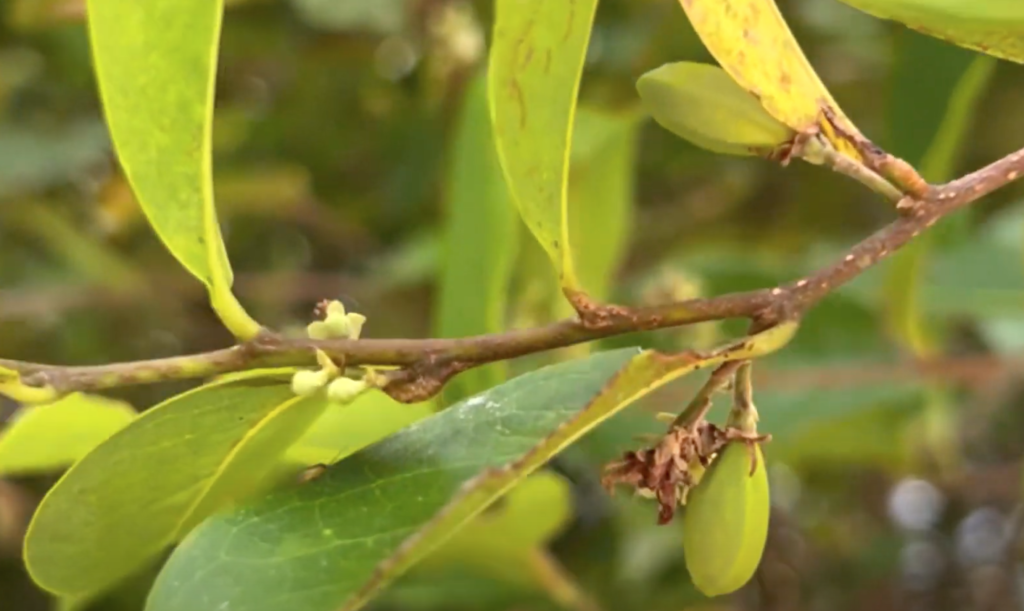Coco Plum Tree: Facts and Findings
I had the opportunity to observe the inland coco plum tree during my visit to Lagos. I found it in the Lekki Conservation Center.
In the lush landscapes of tropical and subtropical regions, the Coco Plum Tree (Chrysobalanus icaco) stands as a testament to nature’s beauty and resilience. With its glossy green leaves, delicate blossoms, and versatile fruits, this tree has earned its place as an invaluable component of diverse ecosystems. Let’s explore the captivating world of the Coco Plum Tree, from its botanical characteristics to its ecological significance and cultural connections.
Botanical Marvels
The Coco Plum Tree, a member of the Chrysobalanaceae family, is an evergreen shrub or small tree native to coastal areas of the Americas, stretching from the southeastern United States to tropical South America. It boasts elliptical leaves with a lustrous sheen, creating a vibrant green canopy that provides shade and beauty to coastal landscapes. The tree can reach heights of up to 15 feet, forming dense thickets that offer refuge to various wildlife.

One of the most distinctive features of the Coco Plum is its small, round fruits that resemble miniature plums, varying in color from white to shades of pink and purple. These edible fruits are not only a treat for the eyes but also a source of nourishment for both humans and animals.
Ecological Significance
The Coco Plum Tree plays a crucial role in coastal ecosystems, particularly in stabilizing sandy soils along shorelines. Its extensive root system helps prevent erosion, making it a valuable asset in the fight against the forces of wind and water. In addition to its soil-stabilizing capabilities, the tree provides habitat and food for a variety of wildlife.
Birds, in particular, find the Coco Plum’s fruits irresistible. Species like mockingbirds, cardinals, and warblers are often seen feasting on the nutritious bounty. The tree’s dense foliage also offers a safe haven for nesting, contributing to the biodiversity of coastal areas. The fruits, rich in vitamins and minerals, are not only enjoyed by birds but are also relished by mammals and even humans who appreciate their unique flavor.
Cultural Connections
Beyond its ecological importance, the Coco Plum Tree has woven itself into the cultural tapestry of regions where it thrives. In some coastal communities, the fruits have been historically utilized for culinary purposes, finding their way into jams, jellies, and traditional dishes. The tree’s hard, durable wood has been employed in crafting tools and utensils, showcasing the resourcefulness of local populations in making the most of their natural surroundings.
In some cultures, the Coco Plum has symbolic significance. Its adaptability and ability to thrive in challenging coastal environments are seen as metaphors for resilience and endurance. The tree’s presence is a reminder that life can flourish even in the face of adversity, making it a cherished emblem in local folklore.
Conservation Considerations: While the Coco Plum Tree is resilient and adaptable, like many species, it faces threats from habitat loss and climate change. Coastal developments, pollution, and changing weather patterns can impact the health of these trees and the ecosystems they support. Conservation efforts are crucial to ensure the continued existence of this botanical gem and the benefits it provides to both nature and communities.
In conclusion, the Coco Plum Tree stands as a testament to the wonders of nature. From its botanical marvels to its ecological significance and cultural connections, this versatile tree is a jewel along coastlines. As we appreciate its beauty and utility, let us also strive to protect and preserve the habitats that allow the Coco Plum to thrive, ensuring its legacy for generations to come.